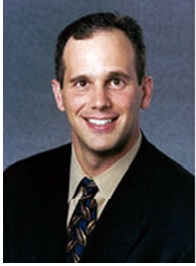By Scot Morris, OD 
Conducting a workforce efficiency analysis can pinpoint inefficiencies in your office flow. Acting on that information can redirect a foundering practice on a path to profitability.
Have you ever thought about what you do every day? Do you have a routine? Is it the most efficient way or just the most comfortable way of doing things? When I go into practices as a consultant, the first thing I do is watch what each doctor and staff member does. In most instances, practices could improve their efficiency by 20 percent to 40 percent and improve their bottom lines substantially by just analyzing what every person in the office does every day. This process of tracking exactly what each doctor and staff member does, and where gaps in productivity occur, is called workforce efficiency analysis.
Analyze Practice as a Business
All practices, and businesses for that matter, have a workflow process. Many businesses have no idea what their process is, much less if it is helping or hindering them. Most businesses, medical or not, fall into this category.
To some this exercise of tracking and measuring how long technicians conducting pre-testing take with each patient or how long a patient sits in your exam room after pre-testing waiting for you, may seem like a waste of time, but if you really want to provide better care, more efficient service and improve your bottom line, this exercise will be one of the most eye opening and beneficial experiences that you will ever undertake as a business person. By thinking like a business person, not a doctor, you will start to think about how each step of the patient visit process works.
Track How Many Steps Patients Are Put Through In Your Office
In most paper-based practices there are approximately 102 steps to get a patient through from the time they schedule an appointment until they are seen again the following year, and this doesn’t include associated marketing, human resources, inventory management and operational tasks. Each of these 102 steps is an opportunity lost or gained to educate your customer, to sell something, and an opportunity to make an impression–good or bad.
Begin Workforce Efficiency Analysis
To understand your patient visit process you will need the participation of your entire staff. Since each person in your office has either a direct or indirect impact on your patient, they all must provide feedback on their daily work routine, and that of the office overall, to conduct a workforce efficiency analysis.
1. Identify each of the approximately 100 steps in your consumer’s experience. Start slow. Ask each person in your office to list specifically each step that your front desk performs.
2. Have each person in the office list which front desk process occurs first, second, and so on. Have them do this individually. Do it yourself. Then collect and combine all the answers. Prepare to be amazed. Don’t be surprised if everyone in the office gives completely different answers. In my experience this is the norm. Look at it as a challenge to get everyone on the same page. This process of getting everyone on the same page as to what your front desk does will take a few weeks.
3. Break down each step and what is actually being done and said. If the process doesn’t have a purpose that educates, sells or improves efficiency get rid of it.
4. Have your staff write scripts of exactly what they say to the patient during each step. If they are not educating or selling then you need to change what is being done. Then decide if each step could be done more efficiently or eliminated all together. This process may take a month or so.
5. Once you are done thoroughly analyzing the work processes of your front desk, do the same for your pre-testing, doctor’s exam, optical, contact lens area, check-out and billing departments.
Conducting a workforce efficiency analysis requires effort and time, but it is well worth it. Once you know where the bottlenecks occur in your office work flow, you can straighten them out so patients have a more positive experience and you can see more patients every day.
Scot Morris, OD,of Eye Consultants of Colorado in Conifer, Colo., is an international speaker and educator on optometric subjects. He directs anophthalmic consulting service, Morris Education & Consulting Associates, as well as Ocular Technology Solutions, Inc. To contact him:smorris@eccvision.com.





















